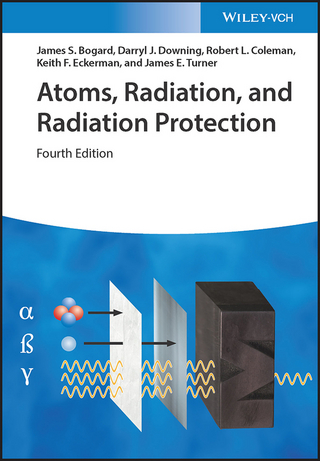
Physics at the Biomolecular Interface
Springer International Publishing (Verlag)
978-3-319-80900-7 (ISBN)
This book focuses primarily on the role of interfacial forces in understanding biological phenomena at the molecular scale. By providing a suitable statistical mechanical apparatus to handle the biomolecular interface, the book becomes uniquely positioned to address core problems in molecular biophysics. It highlights the importance of interfacial tension in delineating a solution to the protein folding problem, in unravelling the physico-chemical basis of enzyme catalysis and protein associations, and in rationally designing molecular targeted therapies. Thus grounded in fundamental science, the book develops a powerful technological platform for drug discovery, while it is set to inspire scientists at any level in their careers determined to address the major challenges in molecular biophysics.
The acknowledgment of how exquisitely the structure and dynamics of proteins and their aqueous environment are related attests to the overdue recognition that biomolecular phenomena cannot be effectively understood without dealing with interfacial behaviour. There is an urge to grasp how biologically relevant behaviour is shaped by the structuring of biomolecular interfaces and how interfacial tension affects the molecular events that take place in the cell. This book squarely addresses these needs from a physicist perspective.The book may serve as a monograph for practitioners and, alternatively, as an advanced textbook. Fruitful reading requires a background in physical chemistry and some basics in biophysics. The selected problems at the end of the chapters and the progression in conceptual difficulty make it a suitable textbook for a graduate level course or an elective course for seniors majoring in chemistry, physics, biomedical engineering or related disciplines.Ariel Fernández (born Ariel Fernández Stigliano) is an Argentine-American physical chemist and mathematician. He obtained his Ph. D. degree in Chemical Physics from Yale University in record time. He held the Karl F. Hasselmann Endowed Chair Professorship in Engineering at Rice University and was a Professor of Bioengineering until his retirement in 2012. To date, he has published over 350 scientific papers in professional journals including Physical Review Letters, PNAS, Nature, Genome Research and Genome Biology. Ariel Fernandez has also published two books: "Transformative Concepts for Drug Design" (2010) and "Biomolecular Interfaces" (2015), both with Springer, and holds two patents (US. 8,466,154 and 9,051,387) on biotechnological innovations. He is currently involved in research and entrepreneurial activities at various consultancy firms.
Chapter 1 Interfacial Physics for Water in Biology.- Chapter 2 Dielectric Structure of Aqueous Interfaces: From Classical non-Debye Electrostatics to a Quantum Theory of Interfacial Tension.- Chapter 3 Solution to the Protein Folding Problem.- Chapter 4 Epistructural Dynamics of Biological Water.- Chapter 5 Dehydron-Rich Proteins in the Order-Disorder Twilight Zone.- Chapter 6 Dehydron as a Marker for Molecular Evolution: Lessons for the Drug Designer.- Chapter 7 Catalytic Role of Dehydrons in Soluble Proteins: Biological Chemistry of Frustrated Interfacial Water.- Chapter 8 Epistructural Selectivity Filters for Molecular Targeted Therapy.- Chapter 9 Epistructural Re-Engineering ofImatinib to Eliminate Adverse Side Effects.- Chapter 10 Epistructural Informatics for the Drug Designer.- Chapter 11 Drug-Target Associations Inducing Protein Folding.- Chapter 12 Combination Therapies to Edit Out Side Effects and Resistance to Inhibition of Drug Resistance.- Chapter 13 Epistructure-Based Design of Drugs with Controlled Promiscuity.- Chapter 14 Synergizing Engineered Immunotherapy with Molecularly Targeted Cancer Treatment.- Chapter 15 Quantum Mechanical Concepts for Epistructural Drug Design.- Chapter 16 Structure-Based Drug Discovery Without Structure: Working Around the Paradox to Disrupt Protein-Protein Associations.- Chapter 17 Epistructural Drug Design to Treat Cancer Metastasis and the Associated Drug Resistance.
"It does give all of the background information developed by the author who is seeking an understanding at the molecular level of what happens at the protein-water interface. This in itself is a good reason to own the book. It is well written and the diagrams and explanations are clear for both the initiated and newcomer to the field." (Peter J. Dobson, Contemporary Physics, Vol. 58 (4), September, 2017)
“It does give all of the background information developed by the author who is seeking an understanding at the molecular level of what happens at the protein-water interface. This in itself is a good reason to own the book. It is well written and the diagrams and explanations are clear for both the initiated and newcomer to the field.” (Peter J. Dobson, Contemporary Physics, Vol. 58 (4), September, 2017)
| Erscheinungsdatum | 05.03.2022 |
|---|---|
| Reihe/Serie | Soft and Biological Matter |
| Zusatzinfo | XV, 483 p. 295 illus., 208 illus. in color. |
| Verlagsort | Cham |
| Sprache | englisch |
| Maße | 155 x 235 mm |
| Gewicht | 7548 g |
| Themenwelt | Naturwissenschaften ► Physik / Astronomie ► Angewandte Physik |
| Schlagworte | Dehydron-wrapping technologies • Drug specificity filters • Epistructural biology • Interfacial biological water • Interfacial tension in biology • Nanoscale water dielectrics • Protein structural defects • Protein Structure • Protein-water interface • Rational drug design • Solution to the protein folding problem |
| ISBN-10 | 3-319-80900-8 / 3319809008 |
| ISBN-13 | 978-3-319-80900-7 / 9783319809007 |
| Zustand | Neuware |
| Haben Sie eine Frage zum Produkt? |
aus dem Bereich


